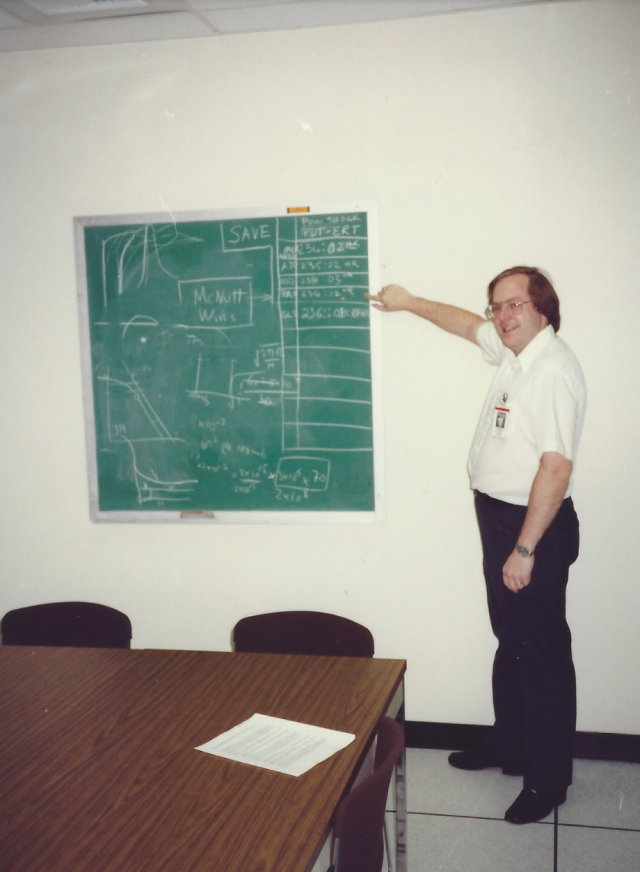
As we eagerly anticipated the arrival of Voyager 2 at the edge of Neptune’s influence, we decided to make things more exciting by organizing a prediction pool among the science teams at the Jet Propulsion Laboratory. We used a chalkboard to list our entries, with predictions based on when the spacecraft would encounter the “bow shock” of Neptune’s magnetosphere in PDT-ERT (Pacific Daylight Time-Earth Received Time).
There were only five predictions to choose from, ranging from Day of Year 235 to Day of Year 236, corresponding to August 23rd and August 24th in non-leap years. The one-way light time from the spacecraft was always given in Greenwich Mean Time (GMT), but for our purposes, we needed to convert it to GMT-SCET (Greenwich Mean Time – Spacecraft Event Time). To do this, we added seven hours and then subtracted four hours and six minutes. This resulted in a two-hour and fifty-four minute difference.
My own prediction was set for 12 noon on DOY 236, which corresponded to August 24th at 14:54 GMT-SCET. To my surprise, the Plasma Science experiment actually detected the bow shock on August 24th at 14:38 GMT – just a few minutes shy of my guess! What made this even more remarkable was the fact that there is still documentation of this prediction pool and a photo capturing the event exists. It just goes to show how far we’ve come in our ability to predict and document these incredible moments in space exploration.






